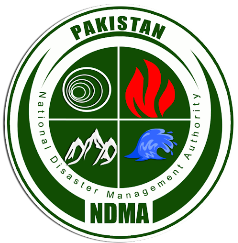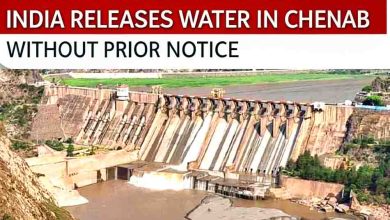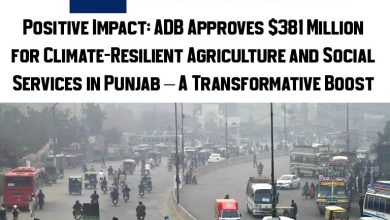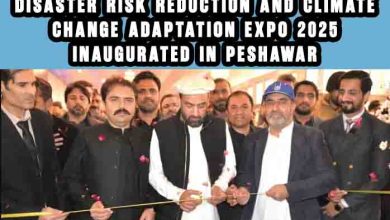A plan for climate change
The News, October 06, 2022
The recent floods in Pakistan are a manifestation of climate change. This is not a call but an irreversible shock to the country. We need to now analyze and anticipate the causes and impacts of climate change on the socio-economic condition, infrastructure, and governance of managing risks and coming up with mitigation strategies for the country.
According to the Global Climate Risk Index, 2021, Pakistan ranks among the top 10 most affected countries in terms of fatalities and mortalities as long-term climate risks from 2000 to 2019.
In 2022, the long-lasting monsoon rains, flash floods, and landslides swept away houses, roads, and bridges and claimed more than 1,600 lives in Pakistan. More than 33 million people have been affected by the floods whereas more than eight million people have become IDPs or are living in emergency shelters. Due to the poor infrastructure, sewerage system, and unsustainable development practices the standing water has become a breeding ground for infectious diseases such as cholera, typhoid, malaria, dengue, and diarrhea.
The study ‘Climate Risk Country Profile 2021’ conducted by the World Bank and the Asian Development Bank (ADB) estimates that Pakistan faces rates of warming substantially above the global average with a potential rise of 1.3C–4.9C by the 2090s over the 1986–2005 baseline. It also projects that the number of people affected by flooding is likely to increase by around five million people exposed to extreme river floods by 2035–2044, and a potential increase of around one million annually exposed to coastal flooding by 2070–2100.
Pakistan is home to some of the largest and longest mid-latitude glaciers in the world. The glaciers in the northern areas cover a 15,000km2 area. The Karakoram-Pamir region is heavily glaciated, with over 5,000 glaciers covering more than 37 per cent of the Karakoram ranges.
In the past 200 years, 35 hazardous floods have been recorded only in the Karakoram area, 20 in the Himalayas, and 17 in the Upper Indus. There are more than 3,044 glacial lakes in Gilgit-Baltistan and Khyber Pakhtunkhwa, where more than 36 glacial lakes have been evaluated with potential GLOFs risks. GLOFs are sudden events that can release millions of cubic meters of water and debris, leading to the loss of lives, property, and livelihoods amongst remote and underprivileged mountain communities. Over the last two decades, the Shimshal valley in Gojal Hunza, Hassanabad Hunza, Shyok stream bowl in the Eastern Karakoram, and Chitral Valley in the Hindu-Kush have been known regions for GLOFs disasters.
It is a matter of concern that even after facing several GLOF disasters the National Climate Change Policy lacks GLOF and its mitigation and adaptation policy. It is important to integrate comprehensive GLOF mitigation and adaptation strategy into the National Climate Change Policy Framework. There is a dire need to conduct field-based and space-based glacier studies to find potential GLOF hazards, their role in erosion and geodynamics, sensitivity to climate change, and potential impact on the downstream populations.

Despite having all the relevant institutions such as the National Disaster Management Authority (NDMA), Dams and Barrages Safety Council, Federal Flood Commission, Water and Power Development Authority, Pakistan Meteorological Department, Flood Forecasting Division, EPAs, and local administration we failed to minimize the devastating effects of the floods. This raises a lot of questions about our overall approach to development and disaster management practices.
Inadequate policies, poor health facilities and infrastructure, lack of economic activities, lack of job opportunities, and lack of political voice and media concentration fuel the vulnerability of the people to climate change and natural disasters.
The available health facilities are of negligible benefit to the public since doctors are rarely available, basic medicines are not procurable and a handful of laboratory investigations are performed, while hospital emergency departments are in a dismal state with limited availability of lifesaving drugs and technical staff. The government needs to especially focus on economically uplifting people living in remote areas of the country and provide them with basic health facilities and the required equipment and infrastructure to cope with disaster situations.
It is obvious that climate change has a devastating effect on the country’s economy, infrastructure, environment, and the lives of the people but we need to examine the practices that trigger these devastating effects. According to the Pakistan Economic Survey 2021-22, more than 80 per cent of Pakistan’s population lives in the Indus Basin, facing multiple threats from climate change, environmental hazards, poor infrastructure, and resource management. The economic cost to Pakistan of poor water resource management is estimated to be $12 billion per annum – four per cent of the country’s GDP.
Constructions should be climate-smart and at least 200ft away from both sides of the flowing water bodies. We could have saved millions of dollars, infrastructure, and lives by just avoiding development in watershed areas. Construction policies and practices need to be revisited. Mostly hotels, houses, and agricultural fields are constructed on river beds which become vulnerable to disasters. There should not be any interference with the natural flow of water and construction should be banned in these areas.
Keeping in view the recent climatic catastrophes, it can be predicted that climate change is expected to bring about an increase in the frequency and intensity of extreme weather events, coupled with the increased variability in South Asian Summer Monsoon (SASM) rains causing frequent and intense floods and droughts in the country. Therefore, we need to realize that climate-induced disasters triggered by our negligence will devastate not a particular province or place but all of us because natural disasters do not discriminate. We all are in this pool, and we all need to join our hands and heads to come up with ways to mitigate its impacts.
We need systematic, climate-smart, and sustainable policies for land use, water, health, energy, forestry, agriculture, and urban settlement to reduce the impact of climate-induced disasters.
The average annual loss to floods is nearly $1 billion with a maximum impact on the agriculture sector. According to the IPCC Report 2022, the agriculture sector in Pakistan is facing a decline in crop yields, and the incidence of crop diseases is increasing because of climate extremes, particularly floods, droughts and heatwaves.
There is a need to utilize several adaptation techniques which include changing crop type and variety, adopting climate resilient crops, and providing updated climate-related information to the farming communities.
The disaster cycle model consists of four stages: response; recovery; preparedness; and mitigation. The first two stages are ‘reacting to’ a disaster, and the second two are ‘preparing for’ a disaster. Unfortunately, the current situation shows that both governments and communities lack the resources and capacities to respond to disasters. These issues can be solved by adopting comprehensive and inclusive economic, development, and climate-smart policies, approaches, and practices.
The writer is project assistant, Sustainability and Resilience Development Program – SDPI. The article reflects the writer’s own views. He can be reached at: aligojali2020@gmail.com







